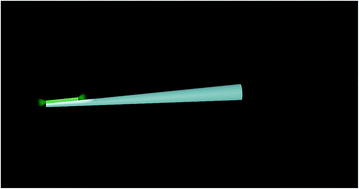Hybridizing CH3NH3PbBr3 microwires and tapered fibers for efficient light collection†
Abstract
Lead halide perovskite micro-devices such as microplates and microwires have shown great potential in microlasers, especially in the “green gap” wavelength region of conventional semiconductors. However, the synthesized perovskite lasers are usually randomly distributed on the substrate, making their laser emissions hard to be collected and utilized. Here we demonstrate a simple way to efficiently couple perovskite microlasers into conventional single mode fibers. By attaching a perovskite microwire onto a tapered fiber via micromanipulation, we found that the emissions along the single mode fiber are more than an order of magnitude larger than the collected emission with a 40× objective lens (NA = 0.6). The detailed estimation shows that the experimentally measured collection efficiency at one end of the tapered fiber can be around 13–20%, which is good enough for practical applications. Our numerical calculations show that the collection is mainly induced by the diffraction at the end of the microwire instead of the evanescent coupling and the total coefficient at the two ends can be further improved by optimizing the tapered fiber and microwire. As the tapered fiber is drawn from a commercial single-mode fiber, this research clearly shows the potential of perovskite devices to be integrated with conventional fiber systems.


 Please wait while we load your content...
Please wait while we load your content...